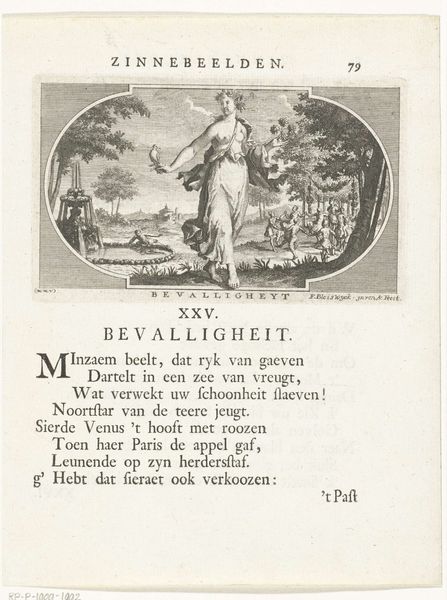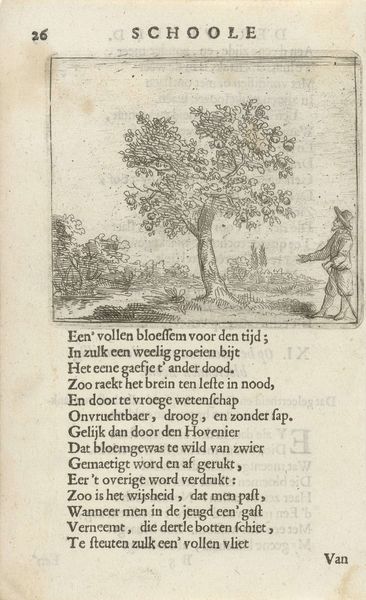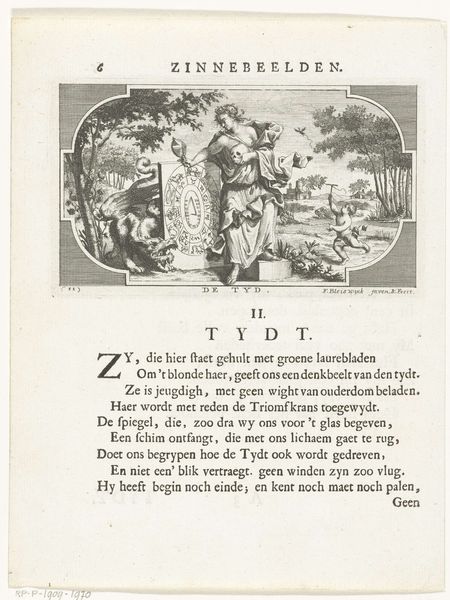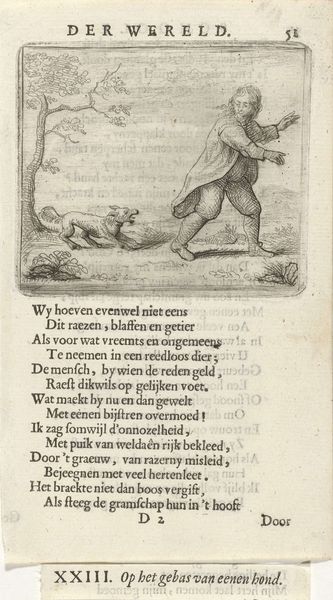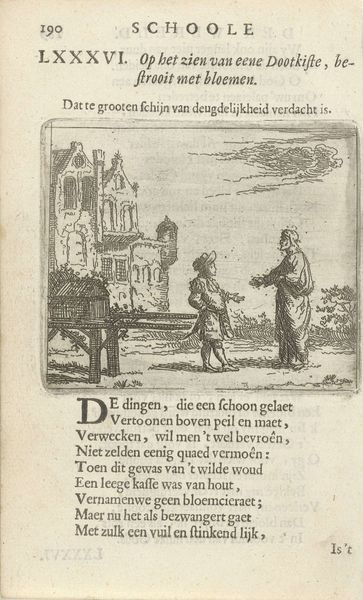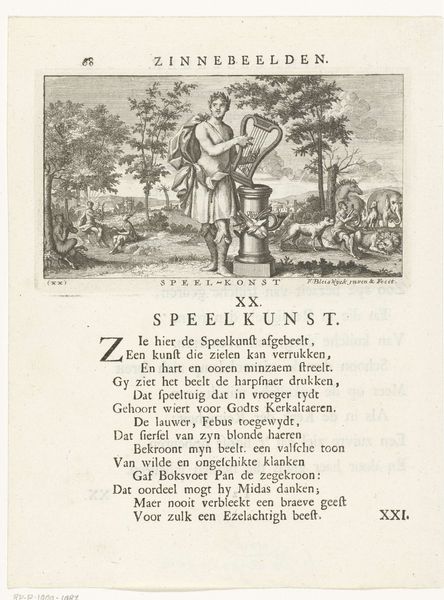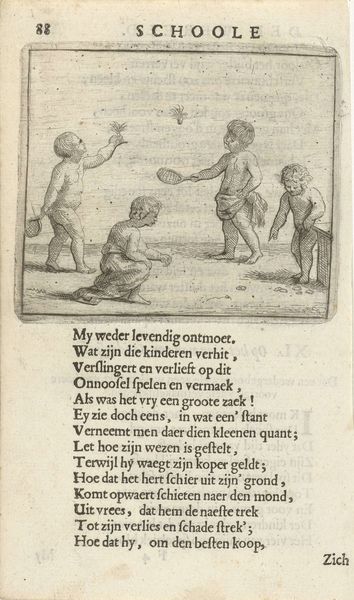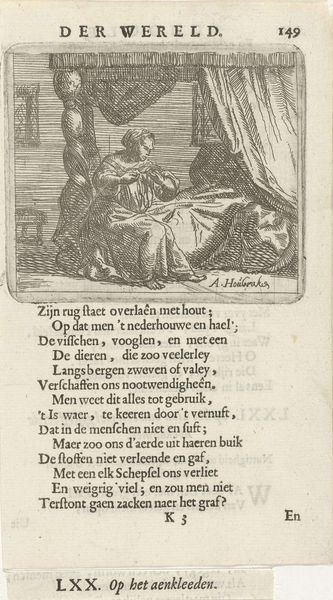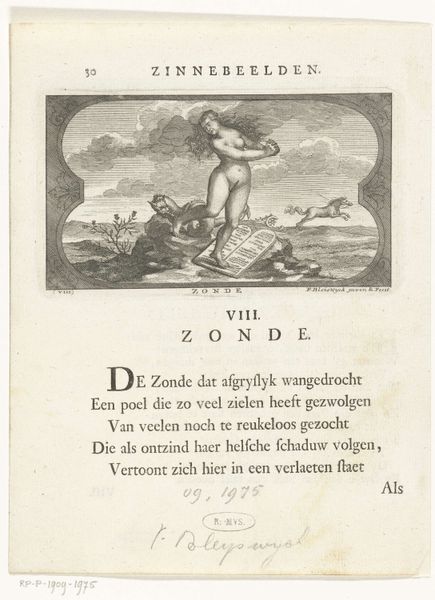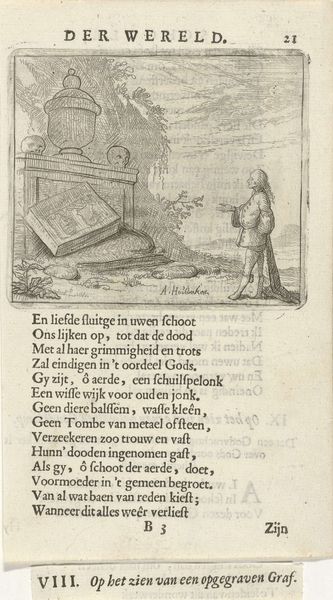
engraving
#
allegory
#
baroque
#
old engraving style
#
figuration
#
line
#
history-painting
#
nude
#
engraving
Dimensions: height 196 mm, width 151 mm, height 77 mm, width 127 mm
Copyright: Rijks Museum: Open Domain
François van Bleyswijck created this emblem with an allegory of beauty sometime between 1686 and 1746 using etching. Notice how Venus is depicted: nude, she stands with lilies beside a column, a symbol of steadfastness, while holding blooming flowers. These symbols resonate with themes of purity, fertility, and the cyclical nature of life. The nude body of Venus, reminiscent of classical antiquity, is here juxtaposed with the lilies, alluding to Christian symbolism of purity and resurrection, thus linking pagan and Christian ideals of beauty. Consider Botticelli’s “Birth of Venus,” where the goddess emerges from the sea, embodying similar ideals of beauty and divine origin. The motif of a central female figure surrounded by adoring figures is an archetype found across cultures. These echoes suggest a collective, subconscious desire for beauty and harmony that transcends time. The enduring power of this image lies in its ability to tap into our deepest emotions and cultural memories, reminding us of the cyclical and timeless nature of beauty itself.
Comments
No comments
Be the first to comment and join the conversation on the ultimate creative platform.

